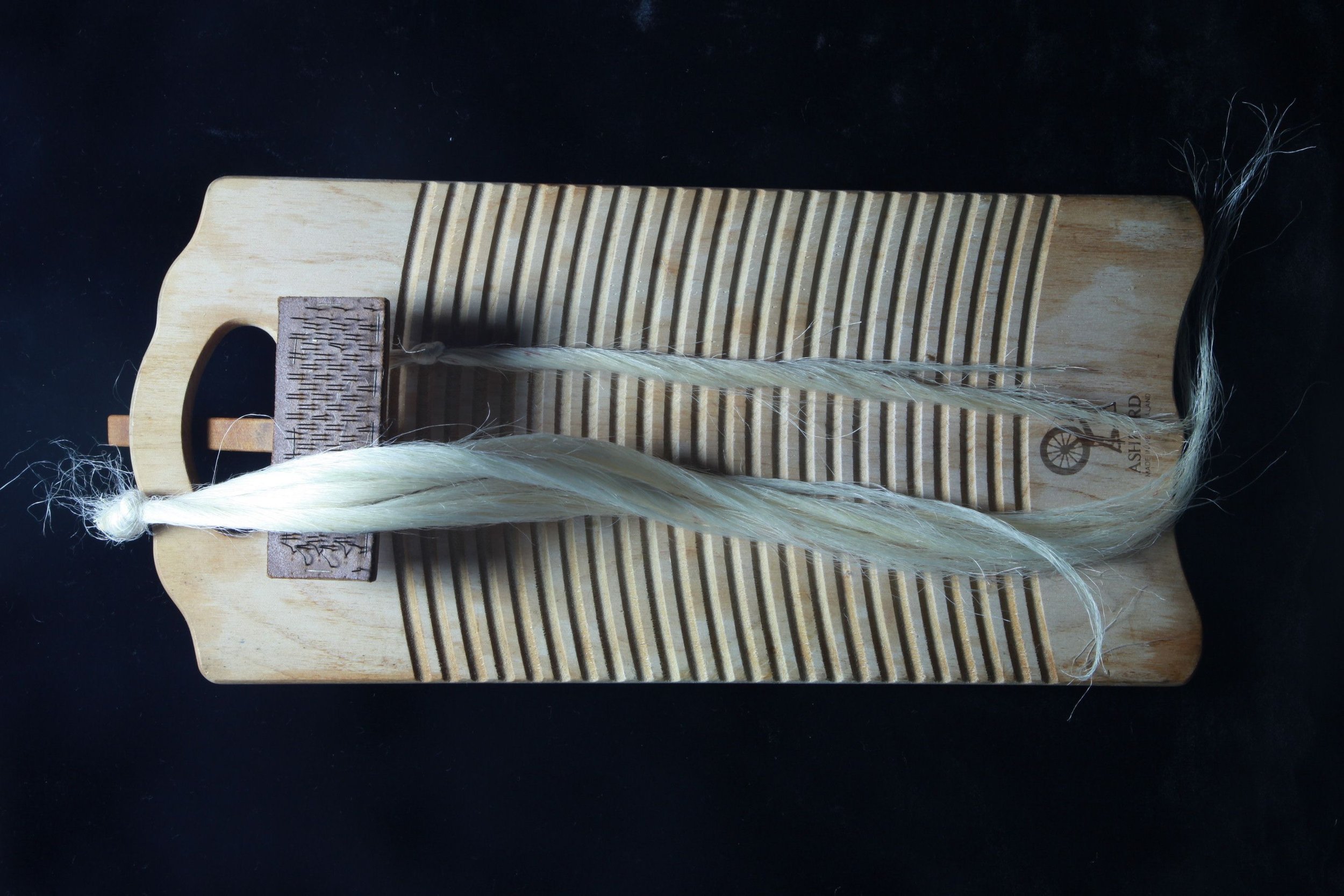Te Kāuru Hou—a new leaf: Processing Harakeke (Phormium Tenax) for WholeGarment® Knitting Technology - Shima Seiki
Kimberley Alexander-Maaka
September 2019
Auckland University of Technology School of Art and Design
A thesis submitted to Auckland University of Technology in the fulfilment of the requirements for the degree of Master of Design
Supervisors:
Andrew Withell
Natalie Robertson
Ngāti Kahungunu / Ngāi Tahu / Ngāpuhi
ABSTRACT
Keywords: Harakeke (NZ Flax), Phormium Tenax, Shima Seiki WholeGarment®, Innovative Technology, Plant Fibre, Te Ao Māori / European, Environment, Sustainable, Productivity, Textile / Fibre Technology, Identity.
There is demand for high-quality natural fabrics, which are cultivated and transformed by processes that are environmentally and culturally sustainable. In response to this demand, and underpinned by Te Ao Māori worldviews and environmental values, this research meticulously questions how can harakeke advance technology while maintaining her integrity? The development of new techniques and innovations are explored to transcend harakeke (phormium tenax) from harvest to a digitally knitted structure — something that has not been achieved before.
The research specifically explores analogue (hand) and digital processes (WholeGarment® digital knitting technologies), the relationship of European sciences and Māori harakeke knowledges, and the interconnections between Raranga (weaving) and the textile design. The bridging of these areas give rise to opportunities for experimentation, creativity and innovation. This includes the development of new techniques for the successful processing and spinning of muka fibre using innovative binding solutions, combing and wave-set processes, and the knotting of fibre ends to create a fine yarn for further processing using digital knitting, as well as simple processes to soften the fibre after knitting.
The findings demonstrate how techniques from the past and present can be synthesized to create new and unconventional textiles. They also show how Te Ao Māori worldviews can augment and extend scientific knowledge, and when integrated with design, can transform natural plant resources into innovative, sustainable materials and products.
PREFACE
I am of Māori and European heritage which requires navigating across and between two cultural worlds. Raised in Aotearoa between the Bay of Islands and East Coast communities, my cultural and industrious farm upbringing are integral parts of my identity and commitment to innovative growth. Such diversification of place allowed me to discover potential collaborative pathways within a digital practice using valued traditional knowledge and harakeke.
Kingsclere Farm, Okaihau, NZ. Photo credit: Whanau archives. 1980s.
As a young child, my maternal Ngāpuhi grandfather Graham Alexander took me with him to many marae hui as he took an active role in Māori land rights. On the marae, I would be left with the nannies and aunties to learn my way around. At other times, I would go to Nuhaka with my father’s side of the whanau. There amongst my Rakaipaaka and Kahungunu whanaunga I absorbed knowledge about our cultural arts heritage from an early age. My great-grandmother Heni Te Kauru was our Kairaranga (master weaver), drawing on the rich environmental resource of fine harakeke that Nuhaka and its swampy surrounds provided.
Waihou Valley, Bay of Islands, Northland.
Kaihiki Bay, Bay of Islands, NZ.
The lands of the North were also renowned for harakeke. Harakeke was on the farm I grew up on in the Waihou Valley, Okaihau, Bay of Islands. My mother lives there today, with our pā harakeke that has nurtured this research. This heritage has provided me with both tacit knowledge of the whenua and harakeke, and something else intangible — a passion for harakeke and its potential passed down through my whakapapa. It is this passion that has driven this project, a fascination for the properties of harakeke and its possibilities, and a vision that this fibre could be spun into a fine thread for use in the textile industry in new ways.
2016 Design concept: Our spiritual connection with (Papatūānuku).
As an indigenous designer, I aim to formulate conceptual and material design processes that are not detrimental to Papatūānuku (Earth Mother). This thesis considers the impact textile structures have on our environment, by using a sustainable approach to design. My tenure at AUT City Campus has allowed me to be able to work with some of the latest cutting-edge technologies such as 3D scanning, 3D printing, 3D knitting, laser processing and e-textile techniques that have enabled this practice. In these contexts, I believe harakeke has the potential to provide a biodegradable product that is supportive to a sustainable system long-term.
For me, in this research project, everything leads back to the land and the impact the textile industry has on the land. This project emerges from an early hunch that harakeke fibre could be adapted to the 3-D printing world and digital machine knitting technologies. I wanted to combine technology and craft and how bringing the two together could make better products. Our indigenous knowledge can be harnessed to produce the present-day solutions we are searching for. This understanding aligns with Linda Tuhiwai Smith’s statement ‘binding ancient genealogies with contemporary realities’.[1] Te Ao Māori link Atua and humankind together with a common genealogy that spiritually binds us.







